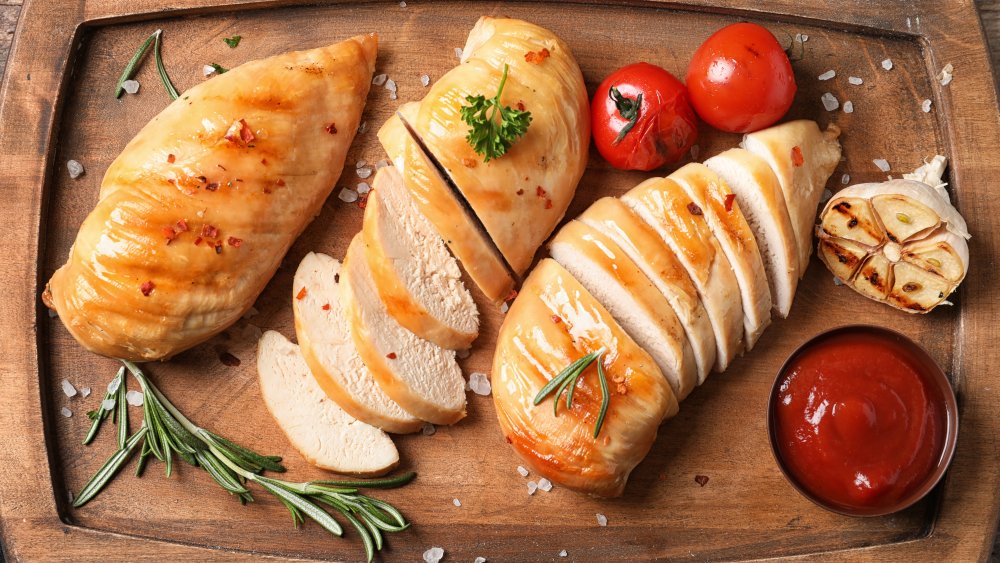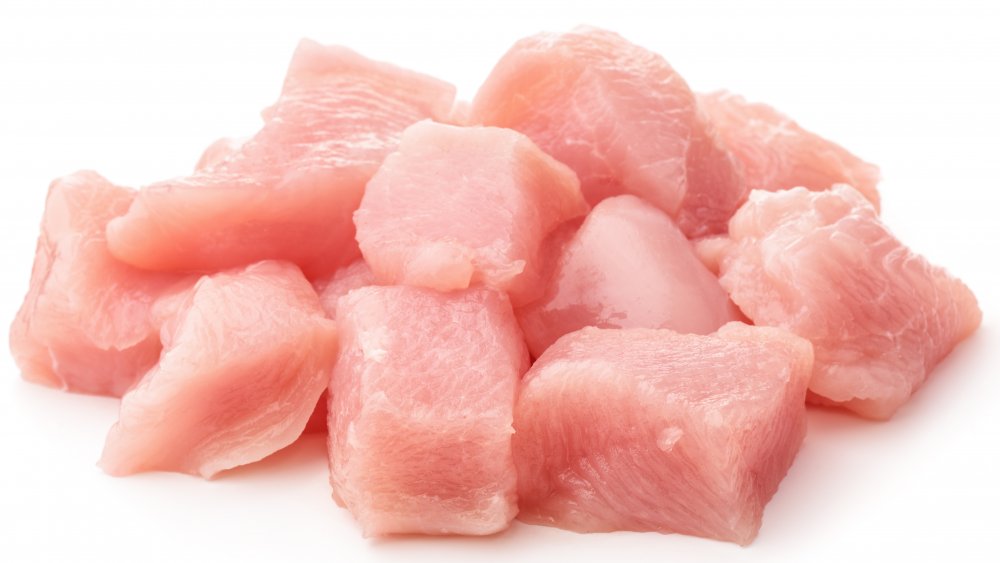How To Really Tell If Your Chicken Is Cooked Properly
Food & Wine notes that, while not inspiring the same passion among home cooks as bacon or steak, chicken is actually one of the hardest meats to cook properly. This is because the lower fat content in chicken, especially when compared to beef and other meats, means there is less leeway with cooking times and techniques.
To eliminate salmonella, chicken needs to be cooked to 165 degrees, which makes it hard to keep the protein juicy and avoid stringy, dried-out meat. According to the Centers for Disease Control and Prevention, salmonella is a bacteria that most people become infected by through food. A whopping 1.35 million people per year are afflicted by the illness, with the most common symptoms being diarrhea, stomach cramps, and fever. These symptoms usually begin five to six hours after infection and can last for up to seven days.
While most people recover from salmonella infection on their own and do not need to receive medical care, the symptoms are not fun and best avoided if possible, which means you need to cook your chicken correctly.
Avoid salmonella by cooking your chicken fully
To avoid salmonella illness, your best bet is to make sure your chicken is cooked properly from the start. CNN says there are three methods generally believed to be sure signs of well-cooked chicken, but all three are not without their faults.
These three common indicators are: when the insides are no longer pink, the juices released when you cut into the chicken are clear, and if the texture of the cooked chicken is correct from prior experience.
However, researchers who looked into these methods found that exactly none of them were actually reliable ways to tell if a chicken was cooked appropriately. Through a series of lab tests, they found that chicken changes in color from pink to white below the safe 165-degree temperature, that the texture of the meat changes from glossy and raw to fibrous at a point where most people are not able to distinguish "safe" meat from potentially illness-causing meat, and that they could find no firm conclusion to what temperature the chicken juices would run clear.
The only sure way to be positive your chicken is cooked properly is to use a meat thermometer to test if the inside of the chicken has reached the recommended safe temperature (test the thickest part of the meat to be absolutely sure), and to flip the chicken to ensure it is cooked well on all of its sides to kill off any pathogens that remain on the outside of the meat.

